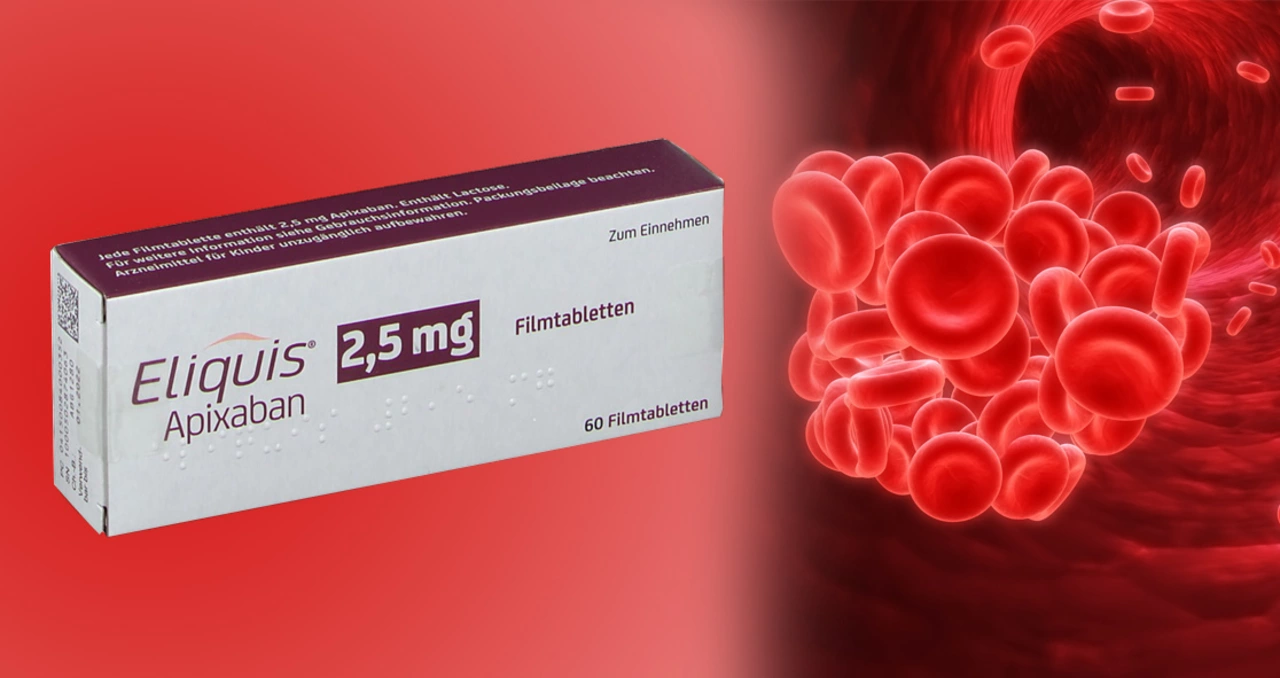As a blogger, I recently came across some crucial information about Apixaban and its possible skin reactions, which I feel the need to share with my readers. Apixaban is an anticoagulant medication that helps prevent blood clots, but like any medication, it can have side effects. One such side effect is skin reactions, which can range from mild rashes to more severe allergic reactions, like hives or even blisters. If you're on Apixaban and notice any skin changes, it's essential to contact your healthcare provider immediately. Remember, it's always better to be cautious and aware of potential side effects to ensure your safety and well-being.
Apixaban (Eliquis): a practical guide for patients
Want a clear, no-nonsense look at apixaban? This drug is a direct oral anticoagulant (DOAC) doctors use to prevent strokes in atrial fibrillation and to treat or prevent blood clots (DVT/PE). Unlike warfarin, apixaban usually doesn’t need routine blood test monitoring, but it still needs respect—especially around surgery, other medicines, and bleeding risks.
How apixaban is used and typical dosing
Common uses: preventing stroke in non-valvular atrial fibrillation, treating acute deep vein thrombosis (DVT) and pulmonary embolism (PE), and preventing clots after hip or knee replacement.
Usual doses (typical):
- Atrial fibrillation: 5 mg twice daily. Reduce to 2.5 mg twice daily if the patient meets two of these: age 80 or older, body weight 60 kg or less, or serum creatinine 1.5 mg/dL or higher.
- Treating DVT/PE: 10 mg twice daily for the first 7 days, then 5 mg twice daily.
- After hip replacement: often 2.5 mg twice daily for about 35 days; after knee replacement: about 12 days. Follow your surgeon’s plan.
Kidney problems: apixaban is less dependent on kidneys than some DOACs, but severe kidney failure or dialysis needs specialist advice. Don’t change doses on your own.
Safety, interactions, and everyday tips
Biggest risk: bleeding. Watch for nosebleeds that don’t stop, heavy bruising, dark urine, black stools, coughing or vomiting blood, or sudden severe headaches. If that happens, get urgent care.
Reversal: there’s a specific antidote (andexanet alfa) in many hospitals; if it’s not available, doctors may use prothrombin complex concentrate. Emergency teams know how to handle severe bleeding—tell them you take apixaban.
Drug interactions to watch for: strong combined CYP3A4 and P-gp inhibitors (for example some antifungals and HIV protease inhibitors) can raise apixaban levels. Strong inducers (like rifampin or St. John’s wort) can lower its effect. Also be careful with NSAIDs, antiplatelets (aspirin, clopidogrel), and some antidepressants (SSRIs/SNRIs)—they increase bleeding risk.
Before procedures: plan with your doctor. For low bleeding-risk procedures they often stop apixaban 24 hours before; for higher-risk procedures they may stop 48 hours or longer depending on kidney function. Always follow the surgeon’s or cardiologist’s instructions.
Missed dose? Take it as soon as you remember on the same day. Do not double up doses to catch up.
Monitoring: no routine INR testing. Your provider will usually check kidney function every 6–12 months or more often if you’re elderly or unwell. Keep a list of all medicines and herbal supplements and share it with your clinician.
Buying and prescriptions: apixaban requires a prescription. Use licensed pharmacies and avoid sites that skip prescriptions. If you see unusually low prices or no-prescription offers, that’s a red flag.
Final practical note: apixaban makes life easier than warfarin for many people, but it’s still a serious medicine. Talk to your doctor about dose, other drugs you take, and what to do before surgery or dental work.

